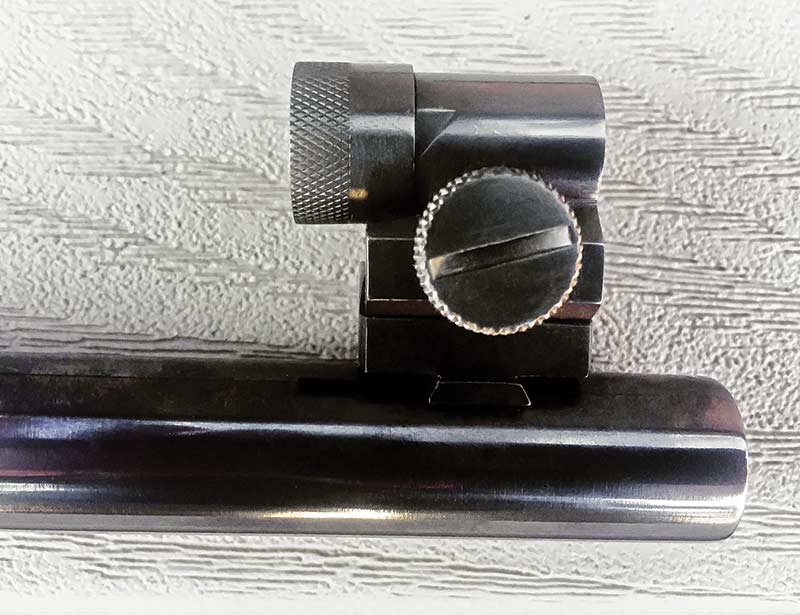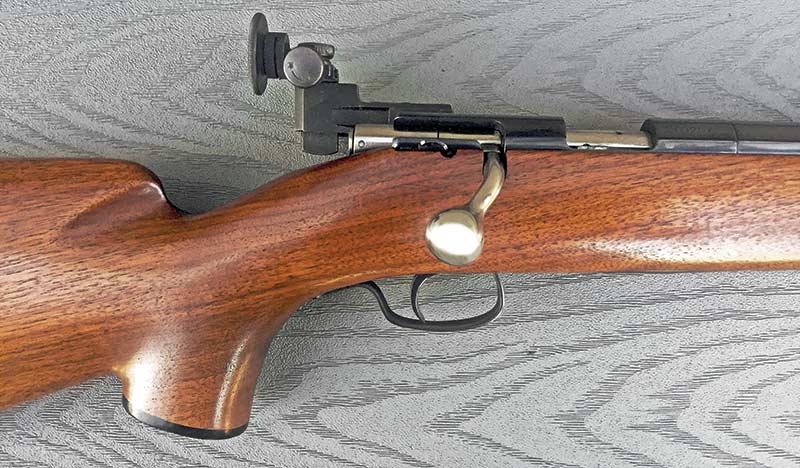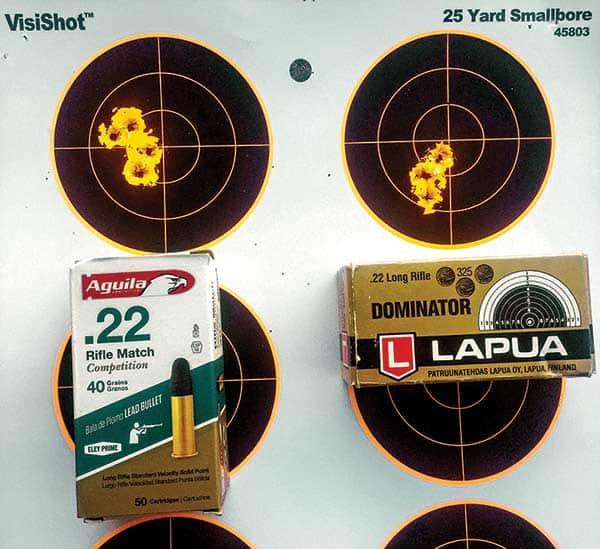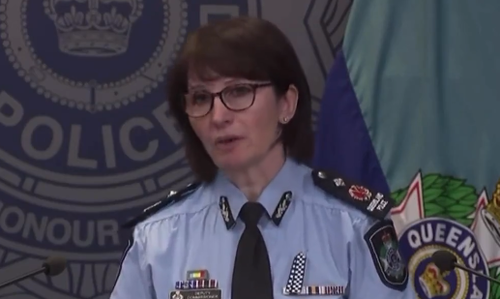Month: January 2023
Few vintage .22s have the legendary reputation for tack-driving accuracy as Winchester’s Model 52. It was discontinued in 1979, but whether in Sporter or Target trim, it’s still a byword among connoisseurs of bolt-action rimfires. The only drawback, of course, has been its premium price.
The original 1919 sticker for the M52 Sporter was $88.50. That sounds like a whopping good deal until you stop to consider what it translates to in today’s dollars. (Hint: it’s a couple hundred bucks north of a grand).
A Better Mousetrap
What was needed, according to the Winchester brain trust, was a relatively low-cost alternative to the storied M52, one that was lighter, yet accurate enough to allow for competition. So they developed the Model 75, which enjoyed a 20-year production span from 1938 to 1958.
To be sure, Winchester also had another “price” alternative to the Model 52 — the Model 69/69A (1935–1963). The M75’s action was similar, yet the bolt was designed with tighter tolerances and the stock was configured for prone shooting. But these were most certainly not the only bolt-action offerings Winchester rolled out over the years preceding World War II. It isn’t surprising when you consider how popular competitive smallbore rifle shooting was “back in the day.”
R.L. Wilson, in his Winchester, An American Legend, put it this way:
“A flurry of activity in the bolt-action .22 market saw a number of new models brought out by Winchester in the late 1920s and early 1930s. The Models 56, 57, 58, 59, 60, 60A, 67, 68, 69, 677, 72 and 75 all preceded World War II … these rifles intended to claim their fair share of the increasingly competitive .22 bolt-action rimfire market.”
I’m old enough to remember when serious target “.22-ing” was every bit as popular as Cowboy Action or Metallic Silhouette in their respective heydays.
In those pre-Ruger 10/22 days — or make that Remington Nylon 66 days if you’re really old — I can recall shooting 50-foot smallbore targets from prone on a padded mat with some fairly hefty bolt actions when I was a kid. So I immediately had a twinge of nostalgia when hefting the 8.5-lb. Model 75 Target.
This particular specimen is owned by a shooting buddy, John Wightman. It features marvelous quarter-minute click-adjustable Redfield sights — specifically a Model 75 Micrometer rear and a M63 Globe front. These, I was to discover, required a bit of re-familiarization.
The Model 75 Target sports a 28″ barrel and an OAL of close to 45″. It was also offered at one time with the Lyman 77 front sight and 58E rear. Like its pricier stablemate, the Model 52, the Model 75 could also be had in a lighter, shorter barreled (24″) Sporter configuration.
John, like any sensible collector of vintage .22s, had scoured the market for spare magazines and had both the flush-fitting 5-shot and extended 10-shot models. These are expensive items, running around $70 per copy or more — although this isn’t out of line if you’re hunting spare magazines for classic Winchester rimfires.
And speaking of price, expect starting auction bids for replacement Lyman or Redfield vintage target sights be semi-stratospheric.
Range Time
We tried to mix up our test ammo menu between bulk pack bargain stuff, high-velocity 36-grain HPs, and standard velocity 40-grain match brands. The list included Aguila Rifle Match Competition and Super Extra HP, Lapua Dominator, Winchester Super-X Power Point, Sellier and Bellot Club and CCI Mini Mag HP.
At 25 yards virtually everything stayed under an inch for 5 shots, with the Lapua Dominator consistently clustering under a half-inch. We then subjected our aging eyes to the aperture sights at an optimistic (for us) full 50 yards with the Lapua and still beat the 1″ mark.
One thing should be mentioned in passing — the trigger was a fabulously crisp 2 lbs. It’s adjustable, but what we were working with was far removed from what were later referred to as “lawyer triggers.”
We were pretty satisfied with the results, seeing as how we’ve been spoiled with scope reticles for most of our adult lives. And those of us who’ve stuck with iron have generally used ghost-ring setups with far more generous apertures than the pinprick-sized hole on a serious target .22.
There’s a definite learning curve to shooting well by centering a 3″ bullseye in a circular aperture (front and rear) and “keeping the edges even” while breaking the shot.
One trick we did learn in coping with the micrometer sights: If your eyes are “well-aged,” a magnifying glass is a godsend in making adjustments and keeping track of those hashmarks. Once you’re locked down, those old sights are pretty much bombproof.
One other caveat — during extended shooting sessions, the occasional scrub with a brush is sometimes needed to prevent sticky chambering from waxy bullet lube buildup.
Winchester’s Model 75 is a wonderfully crafted walnut and blued-steel artifact from what could be described as an era of “full-size, target grade, receiver-sighted bolt-action .22s.”
RBU-6000 Submarine Destroyer

Dan White was a baby boomer born in 1946 in Long Beach, California, the second of nine children. Though he was expelled in his junior year of High School for violence, he later transferred to another school and graduated as valedictorian. In 1965, White enlisted in the Army.

White was assigned to the 101st Airborne Division as an NCO and served a year in Vietnam. He left the military in 1971 and became a police officer in San Francisco. He purportedly quit the force after reporting a fellow officer for beating a handcuffed suspect. White then joined the San Francisco Fire Department. His rescue of a woman and her baby from a seventh-floor apartment during a fire was the sort of stuff of which heroes are made.

White parlayed his experience as both a cop and a fireman into a budding political career. In 1977 he was elected to the San Francisco Board of Supervisors. During his tenure, he served alongside a youthful Dianne Feinstein and Harvey Milk.
The Saga of Harvey Milk

Harvey Bernard Milk was born in New York City in 1930, the son of Lithuanian parents. Milk was known as an outgoing extrovert in school—the class clown. He played football and was an opera enthusiast. He studied mathematics in college and subsequently entered the US Navy.

Milk served as a diving officer assigned to the submarine rescue ship USS Kittiwake. After a stint portside as a diving instructor Milk was removed from the military via an “Other Than Honorable” discharge for homosexuality. Milk then hopped through several jobs and multiple gay relationships in various cities across the country.

Milk eventually settled in San Francisco. He worked for a time for an investment firm before being fired for growing his hair long in protest of US combat operations in Cambodia. After several failed local election attempts Milk was appointed to the city Board of Permit Appeals in 1976 by San Francisco Mayor George Moscone. This appointment made Harvey Milk the first openly gay city commissioner in the United States.
Mayor George Moscone

George Moscone was a San Francisco native of Italian heritage. His dad had been a prison guard at San Quentin. Moscone attended law school, got married, and also served a stint in the Navy. After a term on the San Francisco Board of Supervisors, Moscone was elected to the California State Senate.

Moscone’s time in the State Senate saw him sponsor a statewide school lunch program as well as the law that legalized abortion in California. Throughout it all, he developed a reputation for championing gay rights. In 1975 he was elected Mayor of San Francisco, beating out conservative John Barbagelata as well as Dianne Feinstein.


The success of Moscone’s campaign turned on a grassroots effort funneled through a variety of local churches. Among them was the People’s Temple, the suicide cult run by charismatic charlatan Jim Jones. You can read more about Jim Jones and the Guyana Massacre here. In recognition of his support, Moscone later appointed Jones as Chairman of the San Francisco Housing Commission.
The Conflict

Dan White and Harvey Milk were initially political allies. Despite their wildly disparate backgrounds, they were both ardent Democrats and enjoyed a compatible ideology. Disagreements over business development issues and ultimately Milk’s placement of a controversial group home in White’s district eventually drove a wedge between them. Their conflict was eventually seen as a bitter proxy fight between traditional family values and gay rights.

White’s supervisor job paid $9,600 per year ($40,200 today). A local ordnance prohibited any one individual from holding two city jobs simultaneously. As a result, White was forced to resign as a firefighter. He tried to start a business selling baked potatoes from a cart, but this endeavor failed. With a wife and three children to support this created a financial burden. Frustrated with his lack of money as well as the labyrinthine machinations of San Francisco politics, Dan White submitted his resignation as Supervisor to Mayor Moscone on November 10, 1978.

The rules were such that the Mayor appointed a temporary successor after a Supervisor resigned. White’s vacancy insured that the Mayor could stack the board with a majority that was warm to his agenda and potentially hostile to local business. Under pressure from his constituents, White approached Moscone and attempted to rescind his resignation.

Mayor Moscone and Harvey Milk saw White’s departure as an opportunity. Milk pressured Moscone not to re-seat White. Moscone subsequently announced that he was appointing Don Horanzy to the position, a farther-Left local politician.
The Killings

A bit more than two weeks after his resignation White had an unsuspecting friend drive him to City Hall. In his pocket, he carried the loaded Smith and Wesson Model 36 .38 Special revolver he had used as a police officer along with ten loose rounds of hollowpoint ammunition. Given the fulminant nature of San Francisco politics, metal detectors had recently been installed at the entrances to the building.

White entered the structure through an unlocked first-story window. Apparently, city officials frequently came to work by this means so as to avoid the waits at the detectors. There’s a message there, but we lack the space to explore it today.

Mayor Moscone was in a meeting with Willie Brown who would himself eventually go on to become Mayor of San Francisco. After Brown departed, White confronted Moscone, again demanding he be given his old job back. Not wishing to make a scene, Moscone invited White into a private lounge attached to the Mayor’s office. Once behind closed doors Moscone lit a cigarette and poured drinks.

Dan White was a trained soldier, a combat veteran, and an experienced police officer. He knew how to run a gun. White drew his revolver and shot Moscone twice, once in the shoulder and again in the chest, perforating the man’s lung. White then shot Moscone twice at close range through the ear, killing him. Bystanders later reported that they took the sound for a car backfiring.

As White left the office Dianne Feinstein recognized him and called his name. White responded with, “I have to do something first.” He then sought out Harvey Milk and caught him in a hallway before inviting him into a private office.

White closed the door, produced his pistol, and opened fire. His first round passed through Milk’s wrist, while the next two struck him in the chest. The fourth hit Milk in the head. As before, White then fired his final shot into Milk’s skull at close range. Feinstein entered the office as White left and discovered Milk’s body.
The Gun

The Smith and Wesson Model 36 is likely the most popular snub-nosed revolver ever produced. The name Chief’s Special spawned from a popular vote conducted at the International Association of Chiefs of Police Convention held in 1950. Barrels could be had in either two or three-inch versions, and the gun carried five rounds onboard.

Serial number 337 was engraved with J. Edgar Hoover’s name and given to him as a gift. An aluminum-framed version was called the Airweight. A variant specifically marketed for female shooters was titled the LadySmith. The gun remains in production today.
The Rest of the Story

Dan White walked out of City Hall unmolested and eventually surrendered to Frank Falzon, a fellow detective from his days with the SFPD. He acknowledged shooting Milk and Moscone but denied having planned the attack. White was charged with murder in the first degree with special circumstances, making him eligible for the death penalty.

White’s legal team claimed that he was caught in the throes of depression and therefore not responsible for his actions. They explained that White, previously a bit of a fitness fanatic, had given himself over to junk food. Subsequent myths perpetuated in the media asserted that his lawyers were alleging that the junk food caused a mental break. This led to the popular term “Twinkie Defense” in the newspapers of the day.
In reality, they were just claiming that the junk food addiction was evidence of his altered mental state, not its cause. Regardless, the jury inexplicably bought this bizarre story. If ever you should choose to assassinate your political rivals in cold blood in a public place, apparently you might want to do it in California.

Jurors purportedly wept when his confession was played in the courtroom. White was subsequently convicted of voluntary manslaughter and sentenced to seven years in prison. He was paroled after five, lost his family, and killed himself via carbon monoxide poisoning in his garage two years later.
A Point of Personal Privilege

Harvey Milk endured discrimination, served in politics, and was gunned down in cold blood by an unhinged lunatic. In 2009 President Obama awarded Milk a posthumous Presidential Medal of Freedom. On November 6, 2021, the US Navy launched the USNS Harvey Milk, the second of the John Lewis class of underway replenishment oilers. As martyrs go, I’d say he’s earned his accolades.

Most thinking folks agree that no one should undergo discrimination. However, ours is a cruel, violent species. There has never since the dawn of time been fairness or equality in a human culture to compare with what we enjoy today. The pursuit is a noble goal to be sure. However, it seems to me we should spend more time being thankful for what we’ve accomplished and less screaming at each other about how horrible things are.

I grow weary of our current unhealthy fixation with sexual practices. In my perfect world, people would be judged based upon what they accomplished or how they’ve made the world better, not with whom they slept or what kind of clothes they wore. That’s a pretty shallow way to define one’s self. Sex is a fairly straightforward primal thing, and most people can do it. The details do not reflect any extraordinary accomplishment. Would it be too much to ask if we just treat everybody nicely and focus on something more substantive for a change?


Bobby Dan Davis Blocker was born in 1928 in De Kalb, Texas, to Ora “Shack” and Mary Arizona Blocker. He attended military school as a child and excelled at football. Blocker played ball in college as well. The fact that he was 6’4” and weighed 320 pounds didn’t hurt his gridiron prospects.

While in college Blocker parlayed his immense size into jobs as both a rodeo performer and a bouncer in a bar. Despite his intimidating habitus, friends described him as good-natured and soft-hearted. Upon his graduation from college in 1950 Blocker received a letter from Uncle Sam.
Bobby Blocker Goes to War

Bobby Blocker was drafted in 1951. He took his basic training at Fort Polk, Louisiana, and was there molded into an infantryman. He spent another nine months honing his craft in Sapporo, Japan. In December of 1951, Blocker deployed to Korea with F Company, 2nd Battalion, 179th Infantry Regiment, 45th Infantry Division—the Thunderbirds. He served in-country through August of 1952.

Blocker landed at Inchon and by Christmas was in the thick of the fighting. In short order, he found himself near Chorwon in what is today North Korea. The series of fortifications that Blocker’s regiment manned was called the Jamestown Line. He remained in combat for 209 days.

The Jamestown Line was a series of trench systems. Where much of World War 2 had been a war of mobility, Korea frequently devolved into a bloody stalemate fought in foxholes and static trenches more akin to those of the First World War. Add to this the bitter cold and penetrating wind and you had a recipe for misery on a scale most modern folk cannot imagine.

Opposing units seesawed back and forth assaulting hills and taking fortifications in a war where success was measured in yards. Allied troops designated the dominating terrain feature Old Baldy, a distinctive promontory that held a commanding vantage over the entire area. The most critical piece of dirt in the area became known as Pork Chop Hill.

Bobby Blocker’s part in this sordid bloody production was simply the opening act. The Thunderbirds seized Pork Chop Hill, so named because of its geometric similarity to the familiar porcine comestible, in May of 1952. A seriously bloody fight took place between Allied troops and the Chinese the following year.

In April and July of 1953, some 347 Americans died against an estimated 1,500 Chinese dead. The two major battles for Pork Chop Hill gained notoriety due to their apparent utter pointlessness. Men bled out to hold terrain that had little significance in the real world. This fight unfolded while the UN Command was negotiating with the leadership of China and North Korea over the Korean Armistice Agreement. Both sides wanted the hill as a bargaining tool. Of all the reasons a man might have to die in battle, this was a really crappy one.

Back when Bobby Blocker called this desolate scrap of real estate home things were still plenty horrible. Blocker was acting First Sergeant on May 25, 1952, when his company manned positions on Hill 200 near Outpost Eerie. In the frenetic combat that followed six Americans were killed and a further 21 were wounded. At the same time, 132 Chinese soldiers fell.

Gordon Abts, an American grunt who earned the Silver Star for gallantry in May of that year, served under Sergeant Blocker. He later said, “(Blocker) was a great guy. He was very strong. He could take a beer can between two fingers and crush it. He was very athletic. He was loud, but very friendly and got along with everybody. He was a great leader.”

SGT Blocker was wounded rescuing his men under fire. He was credited with saving the lives of several members of his unit during combat. At a time when most Chinese attacks occurred at night, Blocker and his men fought gallantly against the infiltrating Communist hordes.

Blocker’s 179th Infantry Regiment was taken off the line in July of 1952. Only then was SGT Blocker finally evacuated to a hospital. The Thunderbirds went into reserve, and by the end of the summer Blocker was headed home. When he left the Army he had been awarded the Purple Heart, the National Defense Service Medal, the Korean Service Medal with two bronze campaign stars, the Republic of Korea Presidential Unit Citation, the United Nations Service Medal, the Korean War Service Medal, and the Combat Infantryman Badge.
Now What?

When he returned to the US the gigantic combat veteran taught high school English and drama before taking over a sixth-grade classroom at Eddy Elementary School in Carlsbad, New Mexico. Now married to his new wife Dolphia, the couple eventually moved to Los Angeles.

Blocker had a Master’s degree in drama and began pursuing his doctorate at UCLA. Blocker was from Texas and typically dressed the part. At one point he was standing in a phone booth arrayed in his typical Texan attire when the casting director for a television western spotted him. Things got busy from there.

One of his first credited roles was as the Goon in the Three Stooges short Outer Space Jitters in 1957. He made the playbill as Don Blocker for reasons that have been lost to history. At the same time, he was cast as the blacksmith in two episodes of Gunsmoke. Small parts in Colt .45, The Restless Gun, The Sheriff of Cochise, Cheyenne, The Rifleman, Cimarron City, Sergeant Preston of the Yukon, Wagon Train, and Have Gun Will Travel followed. This was the Golden Age of TV Westerns, and Bobby Blocker rode the wave. Throughout it all Blocker parlayed his impressive size into screen-filling characters alongside most of the major actors of the day.

In 1959 Bobby Blocker landed his dream job. He was cast as Eric “Hoss” Cartwright in the hit NBC Western series Bonanza. He by now marketed himself as Dan Blocker professionally. Blocker played the iconic role through 415 episodes.

When interviewed about the unique combination of power and compassion he poured into the character of Hoss Cartwright, Blocker said he tried to channel Stephen Grellet, the prominent 18th-century French-American Quaker missionary. Grellet once wrote, “We shall pass this way on Earth but once, if there is any kindness we can show, or good act we can do, let us do it now, for we will never pass this way again.” This was Hoss Cartwright’s mantra.
The Rest of the Story

While Hoss was by far Blocker’s most famous role, he logged a little time on the big screen as well. He starred alongside Frank Sinatra in the 1963 comedy Come Blow Your Horn and again five years later as a seasoned tough guy with Sinatra in Lady in Cement. Potentially his most thought-provoking Hollywood encounter involved the esteemed director Stanley Kubrick.

Kubrick was casting his bizarre anti-war film Dr. Strangelove and needed somebody large and menacing to play Major TJ “King” Kong. Peter Sellers carried the film playing multiple parts, but he felt that the role of Kong should be a standalone character. Blocker’s agent perused the script and refused to allow him to read for it. The iconic part subsequently went to Slim Pickens. Dr. Strangelove would have had an entirely different flavor had it been Hoss Cartwright riding that thermonuclear bomb while maniacally waving his cowboy hat.

Blocker worked regularly into the 1970s on projects as disparate as The Cockeyed Cowboys of Calico County and The Flip Wilson Show. Along the way, he was gifted partial ownership in several Bonanza Steakhouse restaurants in return for his service as the chain’s commercial spokesman while in character as Hoss.

Dan and his wife Dolphia had four children. One son, Dirk Blocker, became an actor of some renown in his own right. Dirk’s most familiar role was that of Marine pilot Jerry Bragg in the awesome 1970’s-era TV epic Black Sheep Squadron. Black Sheep Squadron was a staple of my childhood. Looking back on it I can see the family resemblance. Dan’s son David became an Emmy-winning TV producer. One of his twin daughters was a visual artist.

Dan Blocker was a great fan of high-performance automobiles. He maintained a 1965 Chevrolet Chevelle Z-16 as well as a 1965 Huffaker Genie Mk 10 racer he christened the Vinegaroon. The Vinegaroon raced for Chevrolet in 1965 and 1966 as part of the US Road Racing Championship series as well as the 1966 Can-Am championship.

In May of 1972 Blocker went into the Daniel Freeman Hospital in LA to have his gallbladder removed. A cholecystectomy is a common surgical procedure that should have been fairly routine. The hulking combat veteran who played the lovable Hoss Cartwright suffered a pulmonary embolus post-operatively and died both suddenly and unexpectedly. He was only 43.

In an unprecedented effort, the writers of Bonanza wrote Hoss Cartwright’s death into the show’s narrative. More commonly when a major character died during the production of a TV show the writers and producers would simply gloss over it. In the later series Bonanza: The Next Generation it is explained that Hoss drowned saving a man’s life.

Bonanza sputtered on for one more year without Hoss, but it never was quite the same. That 14thseason wrapped in January of 1973 and has been the least popular of the show’s protracted run. Dan Blocker–actor, war hero, father, and cowboy–is buried in the Woodmen Cemetery in De Kalb, Texas, alongside his father, mother, and sister. His is a fairly unassuming grave for a truly outsized guy.
- Assume nothing.
- Never go against your gut.
- Everyone is potentially under opposition control.
- Do not look back; you are never completely alone.
- Go with the flow, blend in.
- Vary your pattern and stay within your cover.
- Lull them into a sense of complacency.
- Do not harass the opposition.
- Pick the time and place for action.
- Keep your options open.

Australian police are using a brutal ambush on two cops to encourage residents to rat out neighbors who are skeptical of the Covid-10 vaccine, or harbor anti-government views.
On December 12, two Brisbane police officers were gunned down by a family of rural Australians, who opened fire as the two officers approached their home. Constables Rachel McCrow, 29, and Matthew Arnold, 26 died in the attack, while a third officer, Constable Randall Kirk, was shot in the leg but managed to escape. A fourth officer, Keely Brough, fled to safety in the bushes.
Later that evening, members of the rural family were killed in a shootout with tactical police.
In response to the incident, Deputy Commissioner Tracy Linford suggested that neighbors need to assume anyone who harbors non-mainstream views is clearly a threat.
“As I said before, if there’s anybody out there that knows of someone that might be showing concerning behavior around conspiracy theories, anti-government, anti-police, conspiracy theories around COVID-19 vaccination as what we’re seeing with [shooting perpetrators] the Train family, we’d want to know about it. We want to know about that. And you can either contact the police directly or go through Crime Stoppers,” she said.
In response, Rebel News‘ Avi Yemini replied: “Queensland Police appealing to the public to dob in their neighbours who “are anti-government or believe Covid-19 vaccine conspiracy theories.””
This has not sat well with many:






